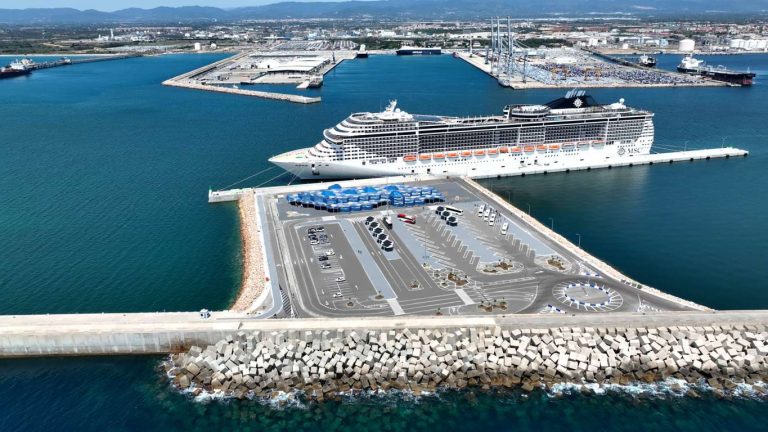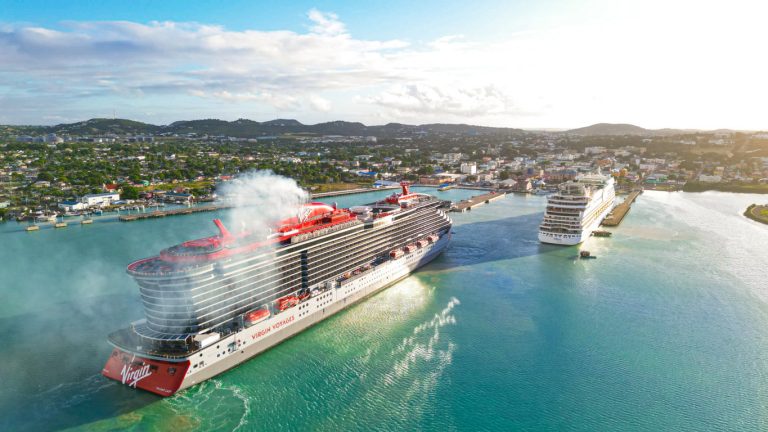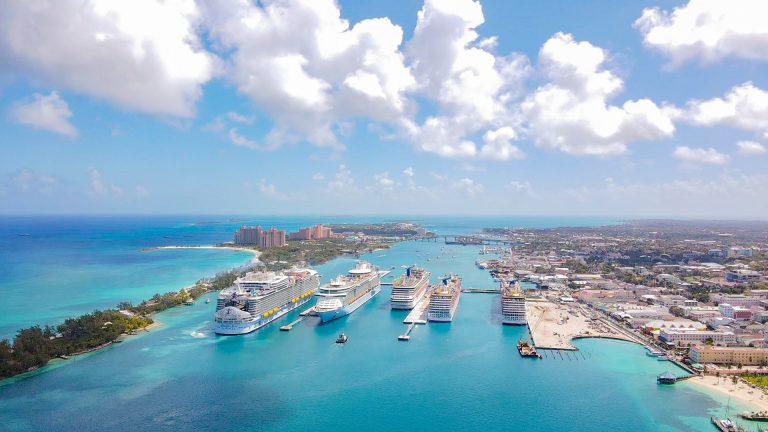GPH: key legal challenges in cruise port operations
The activities carried out by Global Ports Holding are extremely broad and complex, spanning multiple and diverse areas of operation. Managing a network of ports provides, on one hand, extensive expertise in all economic, legal, and administrative aspects, enabling the company to be one of the largest and most advanced port operators in the world.
On the other hand, it requires great skill in navigating the specific challenges that arise in managing cruise ports of varying sizes, operating under different national authorities, and facing naturally diverse issues.
Within this vast landscape, a particularly important area of work is addressing the legal challenges involved in managing cruise ports, particularly in relation to sustainability compliance and regulatory trends. To gain deeper insight into these dynamics and the work carried out by Global Ports Holding, we interviewed Dr. Ece Gürsoy, CLO of GPH. As a key figure in this branch of port management, she faces new challenges every day and engages with various legal and administrative frameworks across different jurisdictions.
Ece Gursoy – Chief Legal Officer – Copy
Among the topics we explored were legal risks in multi-jurisdictional operations, the role of General Counsel in strategic decision-making, and how GPH integrates regulatory frameworks to support sustainability while mitigating risks such as greenwashing. These are crucial functions that highlight how Global Ports Holding has developed its operations and how it provides a comprehensive, integrated service in the management of the cruise ports under its responsibility.
Ece, first of all, thank you for your availability in sharing more about Global Ports Holding’s activities, especially in this legal sector, which, besides being particularly complex, is perhaps less known to the public. What are the biggest legal challenges in operating cruise ports across multiple jurisdictions?
Operating cruise ports across multiple jurisdictions presents several significant legal challenges that must be carefully navigated. One of the foremost challenges is geopolitical risk. Political instability or changes in government can lead to disruptions in operations and may necessitate adjustments to existing legal frameworks.
Another critical issue is the need to adapt to sudden regulatory changes. Each jurisdiction has its own set of evolving laws and compliance requirements, which can change with little notice. Operators must remain vigilant and agile to ensure they are in full compliance, which adds to operational complexity.
Entering a new jurisdiction often involves negotiating bankable concession agreements, a process that can be quite intricate. These contracts must balance the interests of both public and private sectors while ensuring financial viability and long-term sustainability. This balancing act can be time-consuming and requires thorough negotiation skills.
Additionally, effectively communicating and managing investment risks is essential. Aligning stakeholders’ interests and building confidence in risk mitigation strategies can be challenging, especially in unfamiliar or emerging markets where the legal landscape may be less predictable.
Compliance with both local and international laws adds yet another layer of complexity. These legal frameworks may not always align, making it necessary for operators to navigate potential conflicts and discrepancies.
In summary, the legal landscape for operating cruise ports across multiple jurisdictions is multifaceted, requiring a strategic legal approach to address geopolitical risks, regulatory compliance, stakeholder alignment, and cultural differences.
Tarragona
Legal support is therefore an integral part of the services that GPH offers to each port of call, actively contributing to the development of the port itself as well as that of the Holding. How does your legal team support GPH’s growth while managing risks?
Our legal team plays a crucial role in supporting GPH’s growth while managing risks across all areas of the business. We conduct comprehensive due diligence when evaluating potential port acquisitions or contracts, identifying and addressing legal, financial, and operational risks to ensure GPH makes informed decisions that align with our growth goals.
Our team is also key in structuring concession or long teragreements that protect GPH’s interests. We focus on creating long-term partnerships through negotiations that offer flexibility, security, and clear expectations, ensuring sustainable relationships with stakeholders.
To mitigate regulatory risks, we proactively implement compliance strategies that keep GPH ahead of regulatory changes, ensuring adherence to both local and international standards and avoiding legal challenges.
The legal team also advises on mergers, acquisitions, and joint ventures, ensuring these transactions are legally sound and aligned with GPH’s strategic objectives. We identify potential risks and structure deals to maximize value while minimizing legal exposure.
Additionally, we develop policies that align with international best practices while adapting to the specific legal frameworks of each jurisdiction, promoting growth while managing legal risks effectively.
Through these efforts, our legal team enables GPH to grow confidently while managing risks inherent in expansion and new ventures.
It seems to me that the General Counsel plays a crucial role within this management organization. Why is it important for General Counsel to be engaged early in strategic business decisions?
Engaging the General Counsel early in strategic business decisions is crucial for aligning legal and commercial teams to ensure the project is structured with a solid legal framework. This collaboration helps create contracts that are both legally sound and commercially viable.
In public infrastructure projects, due to the nature of public procurement and government processes, these agreements are difficult to amend. Addressing legal, financial, or operational gaps before finalizing the contract is essential to avoid delays, disputes, or unexpected costs down the line. Early involvement of the Chief Legal Officer (CLO) ensures that the project is both legally and commercially sound, preventing pitfalls that could jeopardize its long-term success.
In my practice, the legal department’s role goes beyond just risk management or preparing documentation; it shapes the legal framework by crafting contracts tailored to specific industries and jurisdictions. Therefore, in my opinion and the way that I practice, I do not just react to challenges but anticipate and address them strategically from the outset, ensuring contracts align with long-term objectives.
In today’s business environment, the distinction between a General Counsel and a Chief Legal Officer is clear. A CLO, as a C-suite executive, plays an integral role in shaping business strategy and driving success. By integrating legal considerations early, the CLO helps structure deals that manage risk, ensure compliance, and foster sustainable growth, turning legal documents into tools for success rather than obstacles.
Antigua
I imagine that your work differs depending on whether you are managing ports on a long-term basis or approaching a new port for the first time. What are the key legal considerations when GPH expands into a new port or region?
When GPH expands into a new port or region, like our operation teams do, my first step is to understand the local culture, legal practices, and attitudes toward risk and contractual arrangements. It’s crucial to comprehend how the local market perceives what we consider standard contractual provisions and how these align with local expectations and legal interpretations.
Effective communication, taking into account the cultural and legal practices of the region, is key when presenting our tailored, long-term contracts. Our goal is to establish a framework that is not only legally sound but also mutually agreeable, ensuring both parties are aligned and that the contracts are workable in practice.
At GPH, we don’t see contracts as mere formalities to be signed and filed away. Our contracts are strategic documents that help shape the port’s role in the community. We aim to contribute positively to the local economy and quality of life through our port operations and surrounding retail projects. As such, it’s critical that we create legal arrangements that respect local legal practices and culture while fostering long-term, sustainable relationships. These contracts are designed not just to protect GPH’s interests but also to safeguard the counterparties, as the infrastructure we build touches the lives of local communities and businesses.
Regulations and legal frameworks play a fundamental role in the organization and management of cruise ports. How do legal frameworks contribute to passenger experience and service quality at cruise ports?
Our various contract templates play a crucial role in shaping both the passenger experience and the overall service quality at cruise ports. One of the primary contributions is ensuring safety, which is always a top priority. When striking our legal contracts we meticulously design to secure and streamline passenger movement throughout the port, guaranteeing smooth operations and reducing the risk of accidents or delays. Additionally, right use of legal frameworks help establish high operational standards for terminal infrastructure. This includes not only adherence to health and safety regulations but also ensuring that terminals are designed to optimize passenger flow, comfort, and convenience. By enforcing such standards, legal frameworks contribute to creating environments where passengers can enjoy a seamless, efficient, and comfortable experience.
Furthermore, legal agreements often mandate that cruise ports invest in state-of-the-art facilities, technology, and services that enhance the overall journey for passengers. From customs and immigration procedures to accessibility features and environmental considerations, these legal requirements ensure that the port meets high standards of service and fosters positive passenger experiences.
Nassau
The cruise industry is constantly evolving and must adapt to new regulations and legal frameworks that impact various aspects, from environmental sustainability to safety and passenger rights. What are the key legal trends shaping the cruise industry?
Key legal trends in the cruise industry include stricter environmental regulations, such as carbon emission controls and shore power requirements, as governments push for more sustainable practices. Additionally, evolving concession models are driving operators to meet higher sustainability standards. Another significant trend is increased regulatory scrutiny on health and safety, particularly in the wake of the pandemic, ensuring stricter protocols to protect both passengers and crew.
Sustainability is becoming an increasingly central topic in the cruise industry, with evolving regulations aimed at reducing environmental impact and promoting more responsible practices. Sustainability is becoming a bigger focus in the industry. How does GPH integrate legal frameworks to support sustainability goals?
GPH integrates legal frameworks to support sustainability by aligning all concession agreements and operational contracts with environmental and sustainability commitments. We have strong ESG (Environmental, Social, and Governance) practices, initiating projects such as exploring shore power and using renewable energy. As industry pioneers, we advocate for and implement shore power and alternative fuel infrastructure, collaborating with local authorities to develop sustainable port strategies. Additionally, we actively participate in industry-wide discussions to shape regulatory frameworks that promote greener operations.
In the context of an ever-evolving industry like cruising, regulations play a crucial role in shaping practices and standards. If you could implement one major regulatory change in the cruise industry, what would it be and why?
I would advocate for a global regulatory framework that mandates the adoption of shore power and greener practices across all cruise ports and operators. This would encourage collaboration among stakeholders—cruise lines, port authorities, and governments—to reduce emissions and improve sustainability. In addition to shore power, I would push for stricter regulations on waste management and the use of alternative fuels to further minimize the industry’s environmental impact and promote eco-friendly operations.
Thank you very much, Ece. I believe it is very important to gain a deeper understanding of Global Ports Holding’s activities and the crucial role the institution plays not only in port management but also in the development of cruise destinations. Your work, which focuses on legal aspects and the study of local regulations, is undoubtedly one of the most complex areas of your operations. However, I imagine that it is the synergy between all the expertise that GPH brings together that truly makes the difference and defines the quality of your service.
Don’t miss the latest news, updates, and reviews on the cruise world on Cruising Journal, with photos, videos, and special offers.




